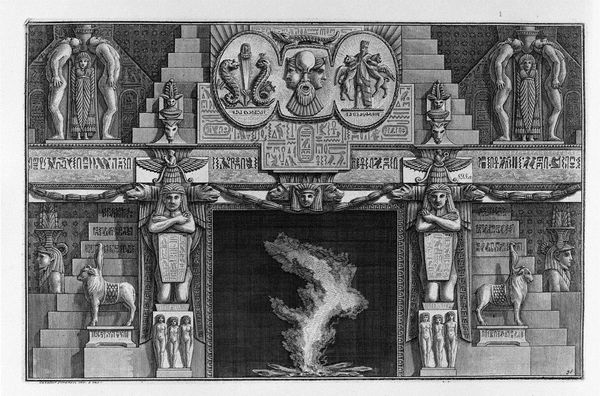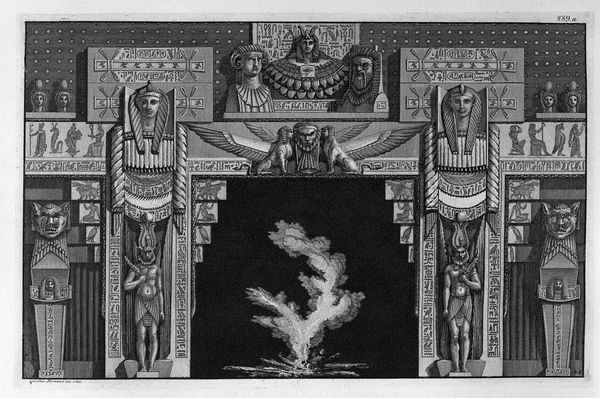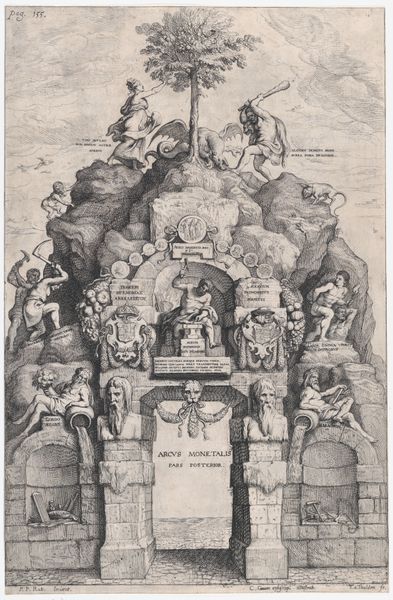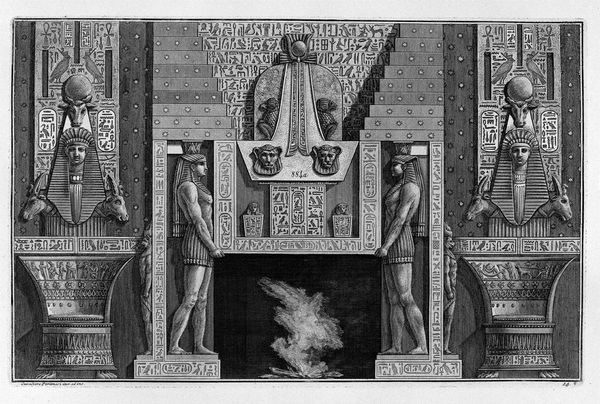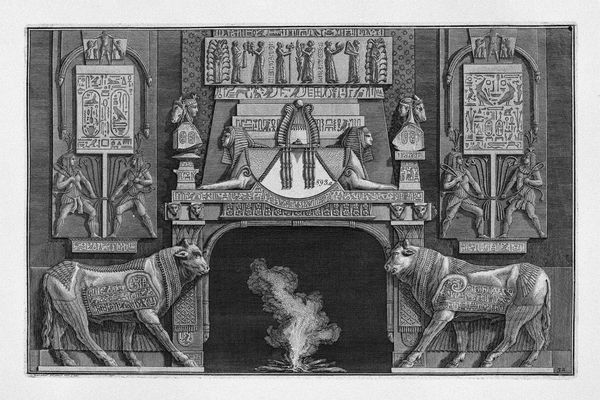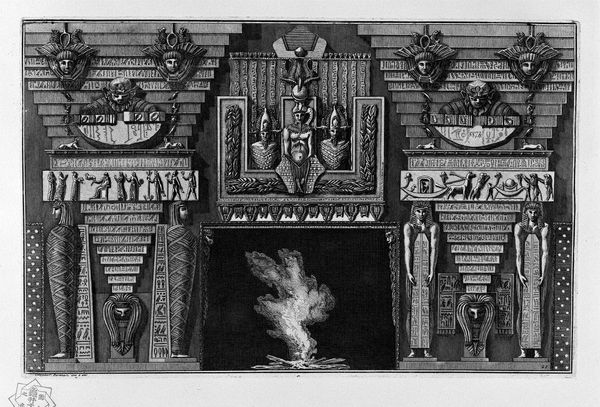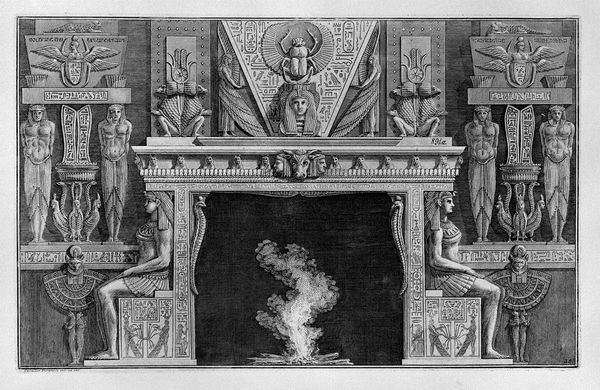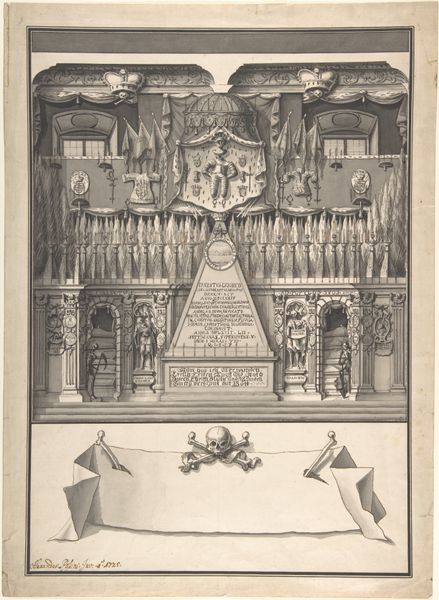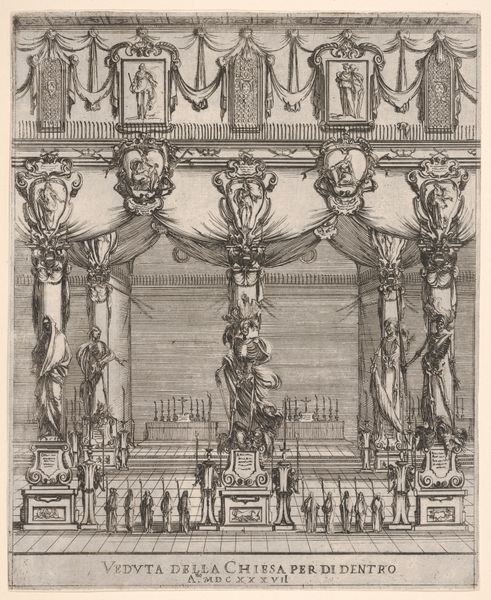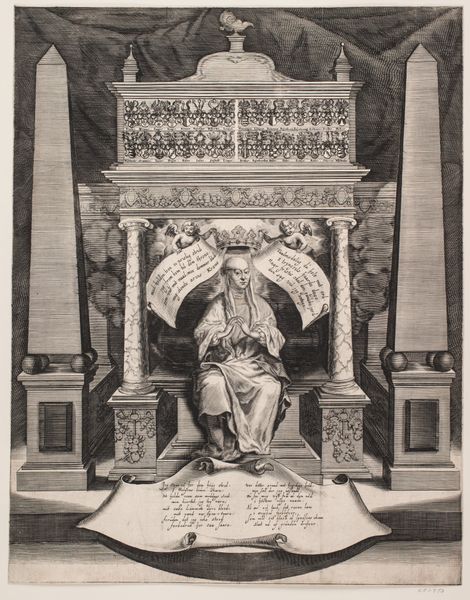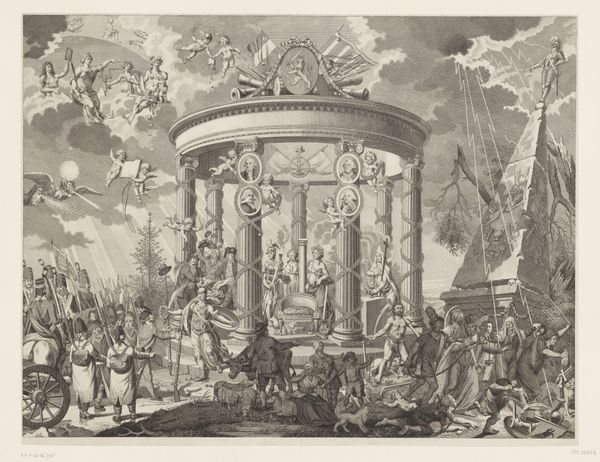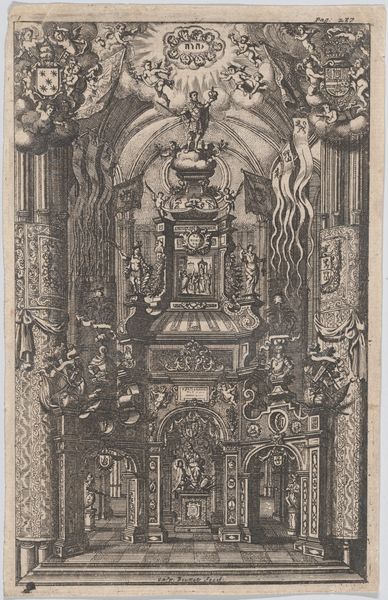
Chimneypiece in the Egyptian style: Two mummies in profile on the left and two figures brearing obelisks on the right (Ch. à l'ègyptienne), from Diverse Maniere d'adornare i cammini ed ogni altra parte degli edifizi...(Different Ways of ornamenting chimneypieces and all other parts of houses) 1764 - 1774
0:00
0:00
print, engraving
#
neoclacissism
#
pen drawing
#
mechanical pen drawing
# print
#
pen sketch
#
old engraving style
#
ancient-egyptian-art
#
figuration
#
geometric
#
history-painting
#
engraving
Dimensions: Sheet: 15 3/4 x 21 7/16 in. (40 x 54.5 cm) Plate: 9 13/16 x 15 3/16 in. (25 x 38.5 cm)
Copyright: Public Domain
Editor: This is Giovanni Battista Piranesi's "Chimneypiece in the Egyptian style," an engraving from around 1770. The Egyptian motifs feel… theatrical, almost staged, in a way that I wasn't expecting. How do you interpret the combination of neoclassicism with these ancient Egyptian elements? Curator: That's a perceptive reading. I see it as a visual manifestation of the 18th-century obsession with the exotic, fueled by colonial expansion and archaeological discoveries. Piranesi is not necessarily offering an accurate depiction of Egyptian culture. He’s using these motifs to construct a European fantasy, a stage upon which ideas about power, mystery, and the "Orient" can be projected. What do you think that appropriation might have meant in his time? Editor: That's fascinating. So it's less about celebrating Egyptian culture and more about...using it as a symbol within a European context? I guess it flattens the culture, turns it into a prop for a European narrative. Curator: Precisely. And we have to ask ourselves, whose stories are being told, and whose are being erased or misrepresented in the process? This work exists within a history of cultural appropriation. This Egyptian revival served European aesthetic and ideological agendas. Editor: I hadn't considered the power dynamics at play. It reframes the piece completely. Curator: These dialogues across cultures are rarely equal. Exploring the legacy of colonialism within art history gives us tools to analyze cultural interactions even today. Editor: That really changes how I see not just this piece, but so many others. Thanks! Curator: My pleasure. Art, like history, is never neutral. Questioning these portrayals helps us build a more equitable and nuanced understanding of the world.
Comments
No comments
Be the first to comment and join the conversation on the ultimate creative platform.
